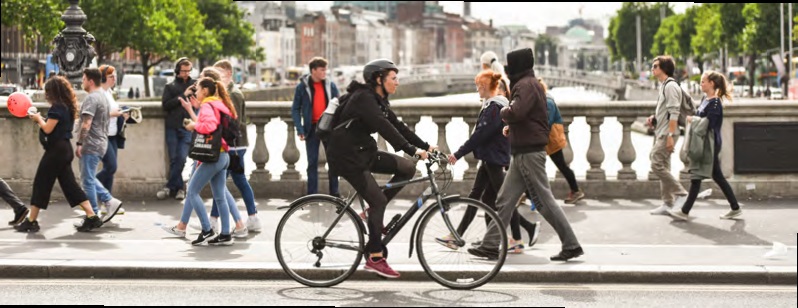This page hosts 2 publications:
- ESRI Research Bulletin : Active travel infrastructure has more positive effects than people expect
- by the Economic & Social Research Institute (ESRI)
- Recommendations for Active Travel Communication
- This short note was developed by the National Transoport Authority in collaboration with the ESRI’s Behavioural Research Unit
Active travel infrastructure has more positive effects than people expect
 ESRI Research Bulletins provide short summaries of work published by ESRI researchers and overviews of thematic areas covered by ESRI programmes of research. Bulletins are designed to be easily accessible to a wide readership.
ESRI Research Bulletins provide short summaries of work published by ESRI researchers and overviews of thematic areas covered by ESRI programmes of research. Bulletins are designed to be easily accessible to a wide readership.
The transport sector is one of the largest contributors to climate change, with greenhouse gas emission continuing to grow. Modal shifts from car journeys to active travel (e.g., cycling, walking) in urban areas thus holds substantial potential for reducing greenhouse gas emissions, with knock-on benefits for air quality and public health. However, despite widespread concern about climate change, opposition to infrastructure change to facilitate active travel is widespread in multiple countries.
The aim of this study was to review national and international evidence on how to design and implement active travel infrastructure from a behavioural science perspective.
Recommendations for Active Travel Communication
Evidence-based Principles of Communication for Active Travel Initiatives
This document suggests some implications for communication based on behavioural evidence about misperceptions and biases in opinion formation about active travel schemes.
The material should not be read as implying unquestioning support for active travel initiatives; sometimes communities and individuals may have legitimate reasons for opposing changes. However, there is evidence that proposed schemes, and their impacts suffer from systematic misperceptions and, furthermore, that active travel schemes tend to be more popular after implementation than before.
This short note was developed in collaboration with the ESRI’s Behavioural Research Unit and is based on evidence contained in their review of relevant international literature.
